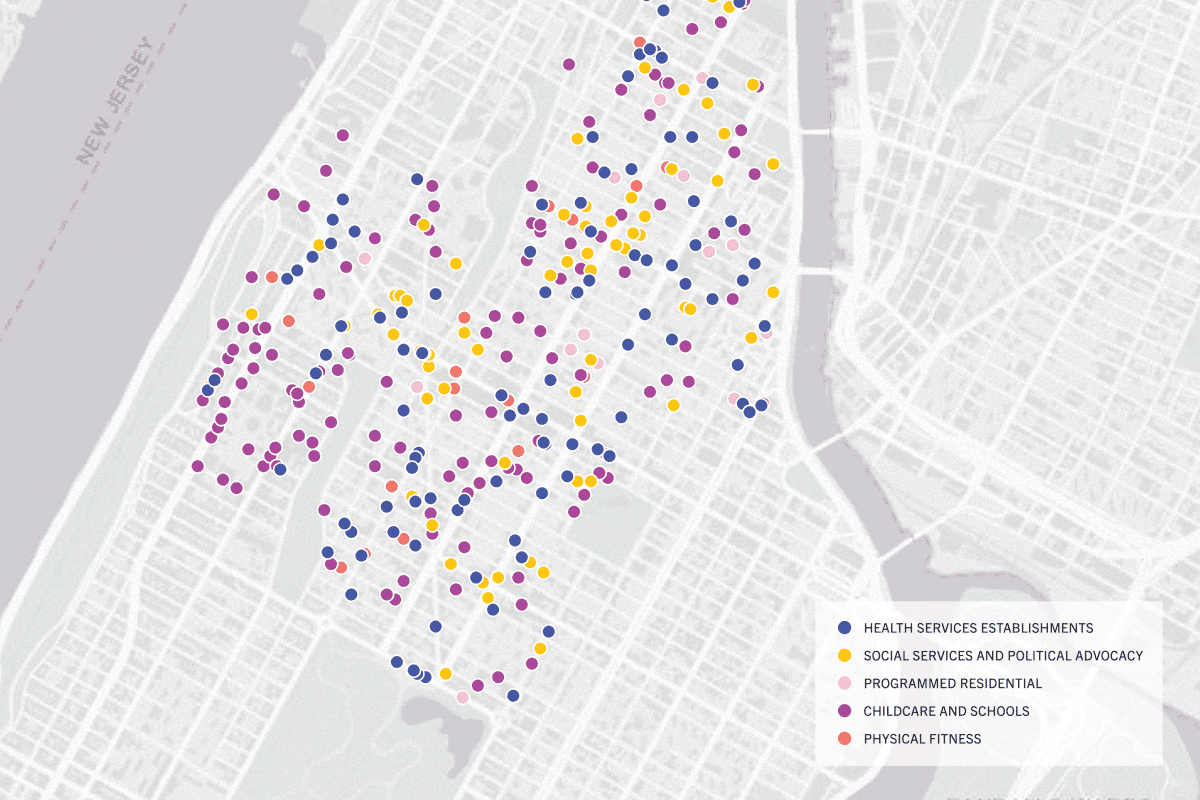
In April, Dr. Marilyn Aguirre-Molina and Dr. Meredith Manze, Professors of Community Health and Social Sciences, hosted CUNY’s first panel discussion to explore opportunities for collaboration with local community-based organizations (CBOs). The meeting, dubbed “Academia in Action: Serving the Harlem Community,” brought together the leaders of Northern Manhattan Perinatal Partnership, Harlem Grown, Boys & Girls Club of Harlem, and Harlem United. Although each group has a long history of activism in Central Harlem, some of those leaders had never met until they sat down together for the panel. That surprising discovery planted the seed for what would become SPH’s new Harlem Mapping Project, Aguirre-Molina recounts.
Under Manze’s and Aguirre-Molina’s guidance, a team of SPH graduate students worked with MAPSCorp NYC and its local partners, youth from the Mount Sinai Adolescent Health Center, to compile the data that will be used as the foundation for the Mapping Project.
“Over the summer the kids collaborating with Mt. Sinai worked in small groups to do a block-by-block inventory and environmental scan to document every health and social services organization in Central Harlem,” Aguirre-Molina says. “After analyzing the data, MAPSCorp NYC then makes that data available publicly.”
CUNY’s SPH student team is adding a more detailed informational layer about the CBOs. “Our students approached the CBO leadership to learn, in more detail, what populations they serve, what services they provide, what their capacity is, if they have the ability to serve more people, etc,” says Aguirre-Molina. The resulting database of 50-100 CBOs is now an open-access website that lists services available throughout Central Harlem—a valuable resource for Harlem residents. The site can be found here: http://arcg.is/0H0DXi
Users of the map will be able to select themes that are important to them, such as the location of every childcare provider in the neighborhood.
“By selecting data points they can get information about each facility they’re interested in,” says Dr. Andrew Maroko, Associate Professor of Environmental, Occupational, and Geospatial Health Sciences. Maroko geocoded and mapped the organizations, and created the interactive web map.
As part of the project, adds Manze, “our team will assess pockets of need or duplication of services, so CBOs can better understand where they might benefit from collaboration or where there are needs not being met.”
Maroko points out that mapping the spatial distribution of CBOs might reveal areas where there is lack of access to important services, and notes one example showing that geographic access can be important for different health outcomes.
“Studies have shown that access to methadone clinics is correlated with lower morbidity rates for opioid overdoses,” Maroko says.
Manze says she doesn’t anticipate uncovering any major pockets of need in Central Harlem, “but there might be a lot of duplication, which is also important information for programs to have.”
“We found that some service organizations that have been in the community for a lot of years haven’t reached out to each other or made connections,” says Aguirre-Molina. “So one of the major contributions we can make would be to help the CBOs connect with each other and create some synergy and a more dynamic environment.” She expects SPH to play a continuing role in that effort: “CBOs are up to their eyeballs in day-to-day issues, so we hope that we can take this project beyond just a list on a website, and facilitate exchanges across these groups.”
Dominique R. Jones, Executive Director of the Boys & Girls Club of Harlem, says she is encouraged by the SPH’s development of a digital directory of services.
“The directory will provide us with an essential tool to better support the children and families we serve, and help them access critical resources that will enable them to thrive,” Jones says.
The SPH project is focusing on Central Harlem specifically—the area bound by Fifth Avenue to the east, the Harlem River to the north, Central Park to the south, and the Hudson River to the west—because “this is where CUNY is,” Aguirre-Molina says. “These are our neighbors. We are not a school of public health that has no interest whatsoever in the community it sits in,” she adds. “Because CUNY SPH is grounded in the values of social justice and equity, this is an organic outcome of our school’s values and beliefs.”
“Our involvement is genuine,” agrees Manze. “It’s a project in keeping with CUNY’s mission to be not just ‘in Harlem’ but ‘of Harlem.’ ”

Health and social services organizations in Central Harlem. Photos: Ariana Costakes













